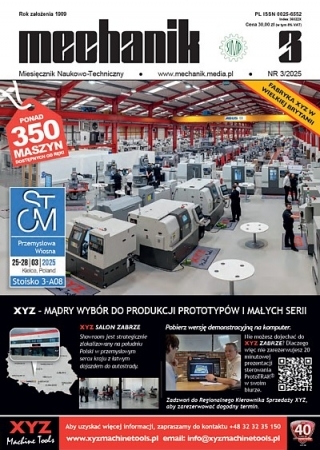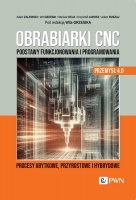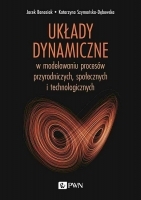Numeryczna i eksperymentalna analiza wpływu geometrii narzędzia na rozkład naprężeń i odkształceń podczas cięcia stopów aluminium na nożycach krążkowych
Numerical and experimental analysis of the tool geometry on states of stresses and strains during shear slitting of aluminum alloys
Mechanik nr 03/2015 - Artykuły z III Konferencji Naukowo-Technicznej „Obrabiarki sterowane numerycznie i programowanie operacji w technikach wytwarzania” zamieszczone na płycie CD
STRESZCZENIE: W pracy zbadano wpływ geometrii narzędzia tnącego na przebieg procesu cięcia i jakość uzyskanej powierzchni przecięcia dla stopu aluminium AA6111-T4 kształtowanego na nożycach krążkowych. Przedstawiono sposób modelowania procesu cięcia na nożycach krążkowych metodą elementów skończonych w Solwerze LSDYNA. Opracowano aplikacje komputerowe umożliwiające m.in. analizę stanów naprężeń i odkształceń występujących podczas i po procesie cięcia, analizę nacisków kontaktowych, ocenę jakości powierzchni przecięcia pod kątem występowania niepożądanych defektów takich jak np.: zadzior. Otrzymane wyniki badań stwarzają możliwość optymalizacji procesu projektowania technologii cięcia w zależności od przyjętych kryteriów np.: jakościowych, trwałościowych.
SŁOWA KLUCZOWE: cięcie, stop aluminium, nożyce krążkowe, modelowanie, geometria narzędzia.
ABSTRACT: In this work an influence of tool geometry on cutting process and quality of final product during slitting of AA6111-T4 aluminum alloy is presented. This paper proposes the application of variational and finite element methods for the modeling of this process using LS-DYNA solver. An applications which allows for stress, strains, contact pressure, and quality of cut surface analysis are developed. The simulation results agreed well with experiments in the study, and could be used to both design the slitting process and support the solution of practical problems.
KEYWORDS: cutting, aluminum alloy, modelling, tool geometry.
BIBLIOGRAFIA / BIBLIOGRAPHY:
- Idzior M.: Kierunki zmian materiałowych w motoryzacji w świetle wymogów ekologii. Motrol nr 9, 2007, s. 72÷87.
- Thipprakmas S.: Application of Taguchi technique to investigation of geometry and position of V-ring indenter in fine-blanking process. Materials and Design 31, 2010, pp. 2496÷2500.
- Kwak T.S., Kim Y.J., Bae W.B.: Finite element analysis on the effect of die clearance on shear planes in fine blanking. Journal of Materials Processing Technology 130-131, 2002, pp. 462÷468.
- Tekiner Z., Nalbant M., Hakan G.: An experimental study for the effect of different clearances on burr, smooth-sheared and blanking force on aluminium sheet metal. Materials and Design 27, 2006, pp. 1134÷1138.
- Hilditch T.B., Hodgson P.D.: Development of the sheared edge in the trimming of steel and light metal sheet. Part 1 - Experimental observations. Journal of Materials Processing Technology 169, 2005, pp. 184÷191.
- Golovashchenko S.F.: A study on trimming of aluminum autobody sheet and development of a new robust process eliminating burrs and slivers. International Journal of Mechanical Sciences. Tom 48, 2006, pp. 1384÷1400.
- Kaczmarczyk J., Gąsiorek D., Mężyk A.: Analiza numeryczna przyczyn powstawania defektów w ustalonym procesie cięcia płyt na gilotynach. Modelowanie Inżynierskie 34, 2007, s. 61÷66.
- Ghosh S., Li M., Khadke A.: 3D modeling of shear-slitting process for aluminum alloys. Journal of Materials Processing Technology 167, 2005, pp. 91÷102.
- Liu C., Lu H., Huang Y.: Dynamic steady-state stress field in a web during slitting, ASME Journal Applied Mechanics 72, 2005, pp. 157÷164.
- Lu H., Ma J., Li M.: Edge trimming of aluminum sheets using shear slitting at a rake angle. Transactions of the ASME, 128, 2006, pp. 866÷873.
- Ma J., Lu H., Li M., Wang B.: Burr height in shear slitting of aluminum webs, ASME Journal Manufacturing Science Engineering 128, 2006, pp. 46÷55.
- Samuel M.: FEM simulations and experimental analysis of parameters of influence in the blanking process. Journal of Materials Processing Technology 84, 1998, pp. 97÷106.
- Hambli R., Reszka M.: Fracture criteria identification using an inverse technique method and blanking experiment. International Journal of Mechanical Science 44, 2002, pp. 1349÷1361.
- Li M.: An experimental investigation on cut surface and burr in trimming aluminum autobody sheet. International Journal of Mechanical Sciences 42, 2000, pp. 889÷906.
- Bohdal Ł.: Modelowanie i analiza numeryczna procesów cięcia blach z uwzględnieniem nieliniowości geometrycznej i fizycznej. Rozprawa doktorska. Koszalin 2009.
- Kukiełka S.: Experiment Planner 1.0–komputerowy program planowania eksperymentów rozpoznawczych i właściwych oraz identyfikacji i analizy modelu matematycznego obiektu badań. Praca magisterska, Politechnika Koszalińska WM, Koszalin, 2002.
- Bohdal Ł., Kukiełka L.: Modelowanie i analiza numeryczna procesu cięcia blach nożami krążkowymi z uwzględnieniem nieliniowości geometrycznej i fizycznej. Mechanik 84, nr 8-9, 2011, s. 712÷716.
- Schwer L.E.: Aluminum plate perforation: A comparative case study using Lagrange with erosion, multimaterial ALE, and Smooth Particle Hydrodynamics. 7th European LS-DYNA Conference 2009.




















